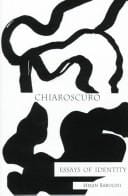Chiaroscuro: Mastering Light and Shadow in Art
Discover how chiaroscuro, the art of dramatic light and shadow, can transform your drawings, paintings, and photographs.

What Is Chiaroscuro?
Chiaroscuro, an Italian term that literally translates to “light-dark,” refers to the dramatic use of contrasting tones to model three-dimensional forms on a two-dimensional surface. By carefully orchestrating highlights and shadows, artists create an illusion of depth, volume, and atmosphere that pulls the viewer into the scene. Whether rendered with paint, charcoal, or digital pixels, chiaroscuro turns flat shapes into palpable objects, guiding the eye and heightening emotional impact.
A Brief History of Chiaroscuro
The roots of chiaroscuro stretch back to Ancient Greece and Rome, where sculptors played with real light on carved marble. Yet the concept truly crystallized during the Renaissance. Early innovators such as Giotto hinted at tonal modeling, but it was Leonardo da Vinci who formalized the sfumato technique—soft transitions between light and shade—that became a cornerstone of chiaroscuro. Michelangelo followed, emphasizing muscular forms with bold illumination, while Raphael balanced delicate gradations for serene compositions.
In the 17th century, the Baroque era pushed chiaroscuro to theatrical extremes. Caravaggio’s canvases plunged figures into inky darkness pierced by shafts of light, intensifying drama and spirituality. Rembrandt refined the method further, bathing faces in warm glows that revealed psychological depth. Across Europe, artists from Georges de La Tour to Artemisia Gentileschi embraced the style, confirming chiaroscuro’s enduring power.
The Science Behind the Drama
Chiaroscuro is more than an aesthetic choice; it is visual science at work. Our eyes are naturally drawn to the brightest areas of an image, so placing highlights strategically directs attention. Darker zones, meanwhile, recede, carving space and giving weight. The interplay triggers a physiological response known as luminance contrast, which helps our brains decode shape and distance. Understanding this principle lets artists craft convincing illusions and emotional narratives with minimal elements.
Core Techniques for Artists
1. Value Scale Mastery
Start by practicing a simple value scale from pure white to deep black. Being able to perceive and replicate incremental tonal steps is the foundation of effective chiaroscuro. Many artists use nine values: three lights, three mid-tones, and three darks.
2. Single Light Source
To keep shadows coherent, establish one dominant light source. Observe how it casts form shadows (on the object) and cast shadows (on surrounding surfaces). A unified light logic enhances realism.
3. Lost and Found Edges
In nature, edges soften where light dissipates. By “losing” edges in shadow and “finding” them in light, you create subtle gradations that suggest atmosphere. This technique prevents outlines from looking cartoonish.
4. Underpainting or Grisaille
Classical painters often began with a monochromatic underpainting to map values before layering color. Digital artists mimic this by working in grayscale first, then adding hues on separate layers.
Iconic Works That Showcase Chiaroscuro
Caravaggio’s “The Calling of Saint Matthew” is perhaps the gold standard, with a diagonal beam of light spotlighting the apostle while leaving the tavern in darkness. Rembrandt’s self-portraits illuminate half his face, inviting viewers into intimate reflection. In the 19th century, Jean-François Millet’s “The Angelus” used soft evening light to ennoble peasant life, proving chiaroscuro is not limited to dramatic religious scenes.
Modern Applications: Photography, Film, and Design
Chiaroscuro migrated seamlessly into photography, where lighting setups like “Rembrandt lighting” create a triangle of light on the cheek opposite the main light. Film noir borrowed the aesthetic to evoke mystery and moral ambiguity, bathing detectives and criminals in moody shadows. Graphic designers leverage high-contrast palettes to craft striking posters and website hero images that command attention even on small screens.
How to Practice Chiaroscuro at Home
Set up a still life with a single lamp in a darkened room. Use white and black objects—a ceramic mug, a piece of charcoal—to exaggerate tonal differences. Sketch in graphite or charcoal, blocking in the darkest darks first, then working toward the lightest lights. Squinting your eyes helps simplify shapes and reveal major value masses. For painters, try a limited palette of titanium white, burnt umber, and ivory black to focus on tonal relationships before introducing color.
Digital artists can create a new layer set to “Multiply” for shadows and another set to “Screen” for highlights, allowing non-destructive adjustments. Employing layer masks lets you soften edges and refine gradients with precision.
Common Mistakes to Avoid
1. Overusing pure black: Absolute blacks can flatten space; reserve them for the deepest recesses.
2. Ignoring mid-tones: Transition areas add realism; without them, forms appear plastic.
3. Inconsistent light direction: Shadows that do not align with a unified light source break the illusion and confuse viewers.
Why Chiaroscuro Matters Today
In an age saturated with color and detail, chiaroscuro offers a timeless lesson: light and shadow alone can tell compelling stories. Whether you are an illustrator, photographer, or UI designer, understanding tonal contrast equips you to lead the viewer’s eye and evoke emotion with elegant economy. From social media thumbnails to gallery walls, the language of light and dark remains universally persuasive.
Conclusion
Chiaroscuro is far more than an art-historical footnote; it is a versatile visual tool that crosses media and centuries. By mastering the delicate balance between illumination and obscurity, you gain control over depth, mood, and narrative. Study the masters, experiment with single-source lighting, and pay attention to how shadows sculpt form. With practice, you will harness the same power that captivated audiences from Renaissance Italy to today's digital realm.